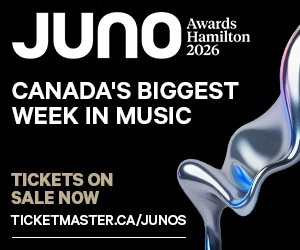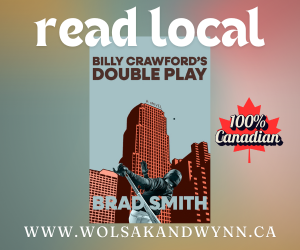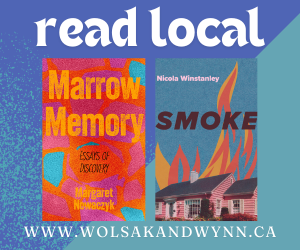CITY VIEW: Committed to community
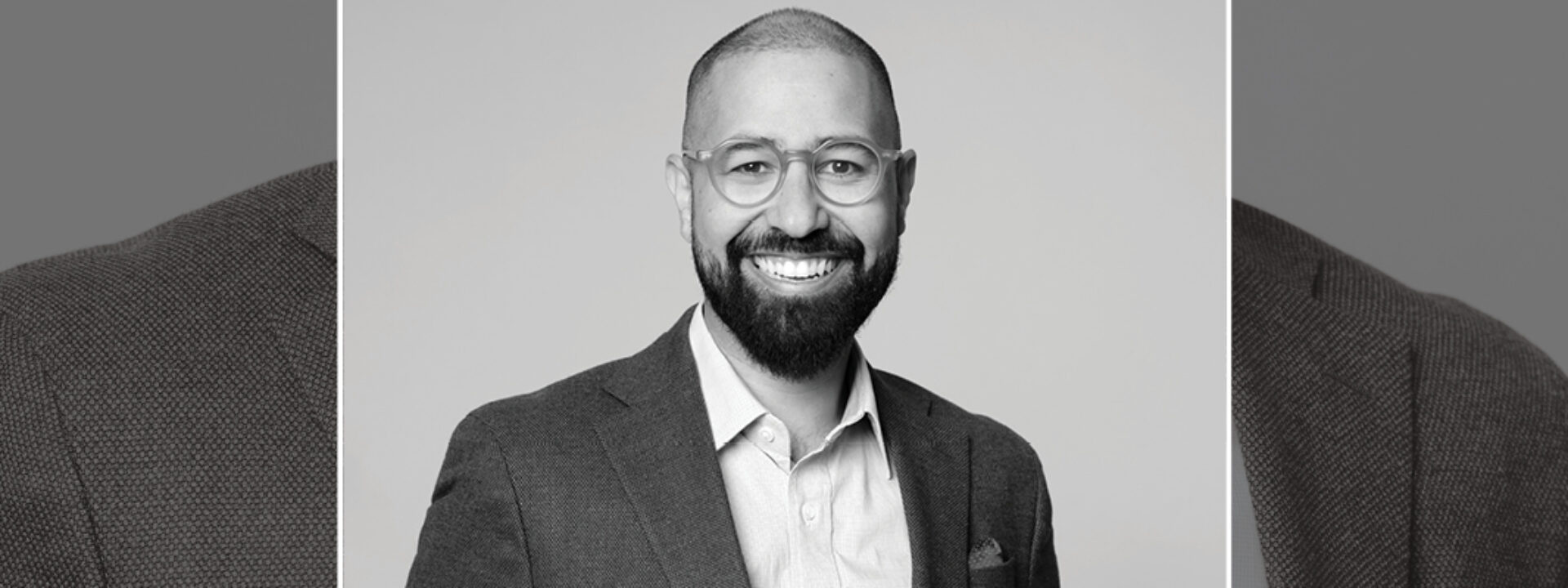
Rudi Wallace is the president and CEO of the Hamilton Community Foundation and he shares with HAMILTON CITY Magazine his vision of his organization and the city it serves.
RUDI WALLACE was born in Vancouver to parents who immigrated to Canada from Guyana and Mauritius. He grew up in Victoria and worked as grants manager at the Victoria Foundation and in senior leadership with The Mustard Seed food bank. He arrived in Hamilton in 2020 when he became vice-president of grants & community initiatives at the Hamilton Community Foundation (HCF), Ontario’s oldest community foundation. In July 2024, Rudi became president & CEO of HCF, its fifth leader in seven decades. He and his wife live in Hamilton with their two young children and their Newfoundland dog.
What convinced you to take the position of vice-president of grants and community initiatives at the Hamilton Community Foundation in 2020?
I was at the Victoria Community Foundation as grants manager and Terry Cooke, my predecessor, came and was chatting about the work that the Hamilton Community Foundation had been doing, in particular around impact investing in social finance. I don't know if 0.001 per cent of people know what foundations do or how they work. It’s pretty niche, but private and family and public foundations, control about $186 billion in Canada, and about $3 trillion in the U.S. It’s significant wealth, which in a lot of ways is problematic.
Terry talked about Bill Young, a donor, and supporter of the foundation, who’s from a prominent family in Hamilton. When Terry first started, Bill said that it was great that the foundation was granting out the federally regulated and mandated 3.5 per cent in granting every year. But he wanted to know what the foundation was doing with the other 96.5 per cent of assets. And to the board's credit at the time, Terry and Annette (Aquin, now-retired executive vice-president of finance and operations) started on this journey of developing and participating in the social finance sector. The ecosystem in Canada was very underdeveloped at the time. And they've really played a role in developing how we actually think about using investments for the public good.
So Terry came to talk with us at the Victoria Foundation about how they could do that. And to their credit, they've now embarked on that in the last number of years as well. And we have some shared investments, experiences in the Canoe Museum (in Peterborough), for instance, or affordable housing. When the VP role came up (in Hamilton), I was aware of the work of the grants team, so I threw my hat in the ring. My wife is from Ontario, and she and I have been chatting about coming back this way. I did my graduate degree at the University of Ottawa. And we have lots of friends out here, friends in Oakville, and Hamilton and her brother was here in Hamilton. We moved across the country in the middle of the Delta (pandemic) lockdown. The Vancouver airport was a ghost town.
I wanted to come to Hamilton because of the substantial contributions the foundation has made in the development of the philanthropic and nonprofit sector, but also the social finance and impact investing led by Annette and Terry, who are both very smart and very community driven, and just took risks.
It’s been a year since you became president and CEO of the organization. What have been your top three priorities since taking on this job?
I think the organization has three priorities. First, refreshing our responsible investment strategies. We invest around 20 per cent of our overall endowment and assets in impact investments, and then we have our public portfolios. We have a responsible investment framework or strategy around living our values on the public side, giving direction to our asset managers who invest that 80 per cent in the public markets. So, for instance, we don't want to be invested in predatory lending, or things like that. Our board updated our values in 2022 to include equity and reconciliation in particular. And so how do those two things play out? So equity in terms of how do we support and think about the world, understanding systemic barriers and deploy resources equitably to try to address some of these challenges. On reconciliation, how are we factoring in Indigenous communities here in Canada, but also with our investments that are sometimes international? So, if we say equity and we say reconciliation, let's literally put our money where our mouth is.
The second one is a climate action strategy. We talk about hot temperatures and heat domes and forest fires. We provide granting, we use our impact investing to think about clean tech in particular, but we need a more formalized structure with benchmarks and measurements that we can point to and say, here's the impact we're making as an institution, and we really want to encourage other institutions to do the same.
And the last priority would be continuing that organizational development and evolution and thinking about the next chapter is with our team. What is the capacity, the infrastructure, the resources needed to maintain and continue or evolve that trajectory that we're on. So we’re really thinking about modernizing our tech systems, bringing in new skills and expertise to double down and deepen our impact and the work that we're doing, and take on some new challenges as well.
How do you describe the role and impact of the Hamilton Community Foundation both in the city and beyond?
Housing and education are two of our strategic priorities from our community leadership perspective. And, you know, I think housing in particular, can be nested in a lot of ways within our social finance and impact investing and how we look at building supportive housing. Climate change is our greatest crisis but at the city level, housing is our greatest issue. That's why we've made a $50 million capital commitment over the next 10 years to build supportive and affordable housing. We need new housing across the spectrum of affordability.
We've invested just over $20 million over the last number of years, and that's catalyzed or contributed to the creation of more than 1,000 units. And we have a renoviction housing granting program as well to really think about how do we stop renovictions and end evictions and keep people housed and support advocacy and legal defense for folks who want to stay in their homes.
We have seen a lot of displacement around the LRT project and that’s an unfortunate norm with gentrification in Vancouver, Victoria, Toronto, Edmonton and Winnipeg. And the thing that I find here is that we are going down a path that is not dissimilar to those experiences, which is so tragic, and, you know, I really hope that the province and Metrolinx shift the practice. I think there are folks in this town doing really good work around how do you ensure community benefits are part of any kind of project.
I think of all the excess lands that Metrolinx will have, what are we doing with it? What's the plan? Are you going to sell it to the top bidder, and we're going to have land speculation that will only drive up prices, which is only going to contribute to a housing crisis, or are we going to maybe think about things differently, centre people and planet, and really think about what a mixed income neighborhood looks like? How do we leverage those assets to actually address critical issues? What does transit-oriented affordable housing look like along the line?And so I think of some of the work happening at the City of Hamilton on that front. I think of the Just Recovery Coalition in Hamilton. I think of Hamilton is Home, and the work that us, the city, other institutional partners have done around social innovation.
So there are things that are happening that give me a little bit of hope that we might be able to mitigate some of the worst impulses of gentrification. In Hamilton, I think there's still time to mitigate some of those effects. How do we learn from mistakes to do things better and not just do exactly the same thing, which has been tragic for so many people?
The community foundation has been catalytic in a lot of ways. We are putting money in that then attracts additional investments. We can procure the land or the cover the pre-development costs. And we as a nonprofit, we're not like a commercial bank saying, ‘Hey, where's our money?’ We'll work with our partners over a long period of time to support them. And the federal government's always last at the table. So you basically have to have all your money lined up before government comes in. So nonprofits cobble together a whole bunch of funding from a whole bunch of different places, and we can through a loan at, say, 5 per cent, so lower than a commercial lender would do, we can provide funding to catalyze a project. That helps get those organizations to a place where the CMHC will come in with funding and take out our position and fund the project.
I know we can take risks that others can't. We are a public foundation. Our whole objective is the public good. We can take the risk.
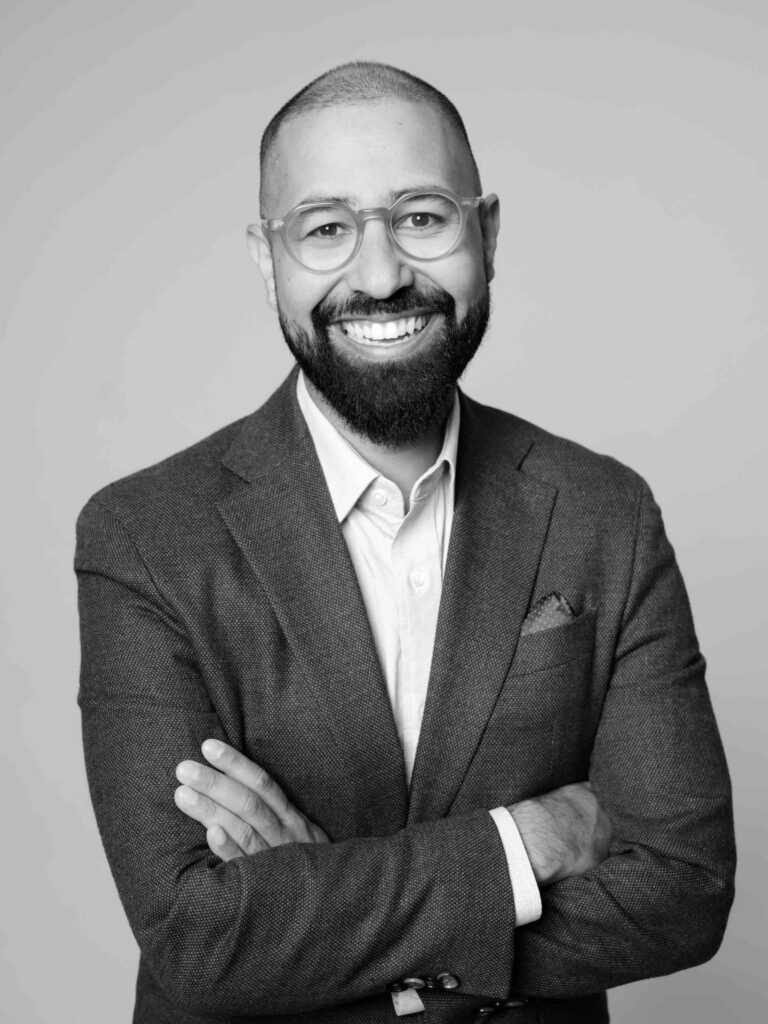
What are Hamilton’s assets?
Hamilton has this unfulfilled potential. I think people are probably tired of hearing that but gentrification is not done yet. There's still time to mitigate its worst impulses and to do something interesting that has the ability to foster community and build relationships and ensure you can manage the likely displacement to come in positive ways. And Hamilton has amazing assets. We're a healthcare hub, we have industry, we have manufacturing, which are under threat, and it's not the heyday, but you know, you have light rail, you have a deep sea water port, you have public institutions here that are thriving. You think of Mac and Mohawk. I think there's lots the City hasn't done well, but I think there's a lot that the City of Hamilton is now doing well around housing. I think of the Housing Sustainable Investment Roadmap, a sort of a centralized strategy around housing in the city that nonprofits, ourselves, other institutional partners are a part of trying to build projects while leveraging every lever at Hamilton's disposal, trying to attract institutional investment. And then the question is, where are the upper levels of government? So I think there are building blocks in place. There is a good foundation, good relationships, and the political will and courage.
There is this kind of collective spirit. It's like a collective chip on the shoulder that Hamilton has, so how do we actually harness the collective expertise, this kind of spirit, this fight that I think this city has, where we care about our neighbours?
Who inspires you?
People are complicated, so for me, it’s what inspires me. I’m inspired by the renoviction bylaw in Hamilton, which seems really boring, but it will hopefully make a real, material difference in people's lives. That inspires me. You know, good public policy inspires me. While we're waiting for a magnificent, wonderful leader to take us to the promised land, people are coming together to solve some wicked problems, to hopefully make our neighbourhoods and the environment better. It's collective action against things that want to harm other people or harm the planet that inspire me.
What initiative or project are you most proud of being a part of since you’ve joined the HCF?
I think joining our Declaration of Action on Truth and Reconciliation. I think the Hamilton Community Foundation was incredibly thoughtful and intentional. I think there was a fear of messing up, and so we were like, OK, we don't want to be paralyzed by this. We want to do this right. It's still in process. It's a journey. It's forever work. And how are we showing up in reciprocity with Indigenous communities and understanding who we are as an institution. Some folks may not like this comment, but we are a settler colonial institution. That's philanthropy. So, how do we move forward? How do we build on the work of my predecessors? Did we make mistakes? Of course, we did. But how do we continue that work? I'm really, really proud of the work that we've done, we're going to approach it with deep humility, knowing that we are going to make mistakes, and I'm grateful to the Indigenous community for partnering and working with us on it, and I'm thrilled that our board, our staff, our volunteers, are all aligned as this is a priority.
What's the best thing about your job?
The best thing about my job is bringing people together towards a shared vision and creating that alignment to do interesting things. I love bringing the board, staff, community partners, businesses, and community donors together. Foundations are a strange, interesting, niche organization that can do that. It's a really privileged position, and comes with great responsibility, so I'm really excited about it.
What is the biggest challenge your organization faces?
Hamilton's problems are our problems. There are macro economic challenges, tariffs, international trade, the rise of fascism, hate, racism, homophobia, transphobia, and then the intersectional, layered issues of housing, mental health, and the opiate crisis. We can’t do everything, so we focus on housing and education as an upstream intervention that helps folks' outcomes later in life. We are making long-term investments in our big priorities.
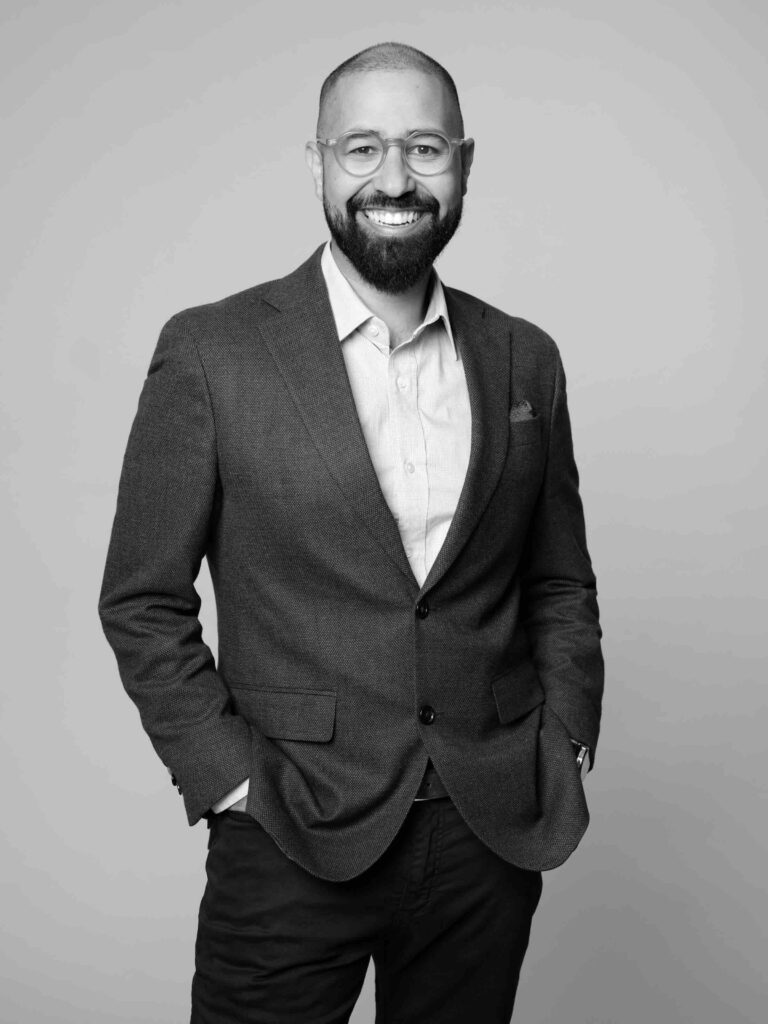
What is the great opportunity?
My hope here is that we can continue to capitalize on the energy around housing. How do we acquire land and existing units and bring them into the non-market space. It's cheaper than building new units. For every one unit we build new in Hamilton, we lose like 23. Predatory investors and REITs come and snatch up what they call depressed assets, then renovate them, which then moves everyone out, hence renovictions, and then they slap a coat of paint on it, and jack up the rents. And then the other opportunity, I would say for us is, I think there's more energy around mobilizing additional philanthropic capital. I think more foundations are deploying their capital in the public interest. I think we want to continue and leverage that and continue that kind of cultivation.
What have you discovered about Hamilton since arriving here?
The level of diversity. There are opportunities to build communities across many different cultures, many different people, whether it’s geographical, coming from rural areas or other cities in Canada or from other parts of the world. Arabic is becoming the third most spoken language here. I think discovering that, and how that plays out in businesses, restaurants, and services, is really interesting and lovely, and such an asset. And then discovering the collective chip on the shoulder has also been super interesting. I give a lot of gifts of the Hamilton Hates You Too gear. I love that. And then we discovered a real porch culture here, too. I've never experienced this kind of porch culture. When we moved here, people came up and said hello. The neighbours came up to say hi and hang out with us. It was awkward at first, but we love it now.
What is your greatest hope for this city?
That we reach our potential. That we mitigate the worst impulses of gentrification, that we put people first, not profit. How do we really think about securing land and property around the LRT in the public interest as public assets. Because who uses public transit? It's people who are renting, so let's hope the people who live along the LRT Line are those who will use LRT. I hope we think differently about neighbourhoods, we think differently about populations who face systemic barriers, and look at equitable practices and that we don't succumb to ideologies that are divisive and harm people. Rejecting that and looking for a shared vision that is for the public good, like that's what I want for this city.
What is your favourite artistic or cultural experience in Hamilton?
I love the street art, like on the (City Centre) building downtown or the boarded-up door, like at the corner of James and James and York that says humans aren't real. I love the Workers Arts and Heritage Centre and Supercrawl and the AGH.
What’s your ideal way to spend a lazy day in Hamilton?
There's no lazy day with two kids under four. We love the Dundas Conservation Area with the kids. We love Ottawa Street and the farmers market, and The Cannon, and a burger and beer at Bernie's. James (Street North) is pretty dope. Often we’re in playgrounds and splash pads and Gage Park.
What is Hamilton’s best-kept secret?
Café Baffico’s cinnamon buns. I don't know if it's a secret anymore because there are lines out the door, but I just love them.
What is your favourite meal in the city?
The fried chicken sandwich at Berkeley North, hands down. It's fantastic. And then at close seconds, the burger at Bernie’s Tavern.
Hamilton needs more of …?
I would say supportive and affordable housing, and bike lanes and canopy cover in east Hamilton. I'm always confused by bike lanes randomly ending, and in particular, as you come to east Hamilton there's no protected bike lanes. And there isn’t enough tree cover. This maybe controversial, but we need more safe consumption sites. When they close down, it just means more people will die. That's just bad public policy. I’ve never really understood the arguments against them. And my question would be: when have people not done drugs? Historically, never since the dawn of time. So why do we pretend otherwise?
Hamilton needs less of …?
The divisive discourse playing out about the downtown and less finding fault with people who have
been the victim of housing policy, or absent mental health services, whatever it is. We need to care for people. And so if we want to solve these seemingly intractable problems, then we need to care for them. You're not going to enforce your way out of it. You're not going to criminalize your way out of it.








